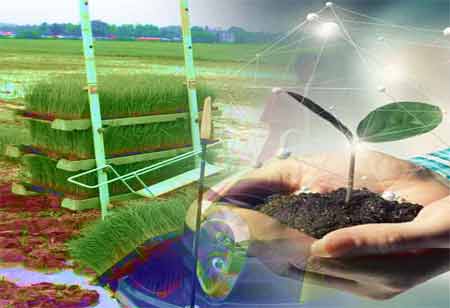Thank you for Subscribing to Agri Business Review Weekly Brief
Harvesting Innovations: Transforming Agri Business Through Modern Harvesting Techniques
The heart of agriculture lies in harvesting, the culmination of months of hard work and nurturing

By
Agri Business Review | Friday, August 11, 2023
Stay ahead of the industry with exclusive feature stories on the top companies, expert insights and the latest news delivered straight to your inbox. Subscribe today.
Modern harvesting techniques are at the forefront of agricultural evolution, driving efficiency, sustainability, and productivity.
FREMONT, CA: The heart of agriculture lies in harvesting, the culmination of months of hard work and nurturing. In today's fast-paced world, the agricultural landscape is evolving rapidly by integrating advanced technologies and modern techniques. From automated machinery and precision agriculture to sustainable practices and data-driven decision-making, harvesting has become a dynamic and pivotal aspect of agri business. In this article, we delve into the significance of modern harvesting techniques in Agri Business Outlook, their key components, and how they are reshaping the future of agriculture by enhancing efficiency, sustainability, and productivity.
The Essence of Modern Harvesting Techniques:
Modern harvesting techniques represent a paradigm shift in agriculture, marked by the infusion of technology and innovation into the age-old practice of reaping crops. These techniques encompass a spectrum of approaches that leverage automation, data analysis, and sustainable practices to optimize the process of harvesting.
Key Components of Modern Harvesting Techniques:
1. Precision Agriculture:
Modern harvesting starts with precision agriculture, utilizing GPS, sensors, and drones to precisely manage planting, irrigation, and fertilization. This maximizes yield while minimizing resource use.
2. Automated Machinery:
Advanced machinery, from combine harvesters to robotic pickers, streamline the harvesting process. These machines are equipped with sensors, cameras, and AI to accurately and efficiently harvest crops.
3. Data-Driven Insights:
Modern harvesting techniques leverage data analytics to gather insights about soil conditions, weather patterns, and crop health. This data guides decisions to optimize harvest timing and yield.
4. Sustainable Practices:
Harvesting techniques increasingly prioritize sustainability, minimizing soil disturbance, reducing waste, and optimizing water usage. Cover cropping and conservation tillage practices also contribute to soil health.
Transforming Agri Business:
1. Improved Efficiency:
Modern harvesting techniques significantly boost efficiency by automating labor-intensive tasks, reducing harvesting times, and optimizing resource utilization.
2. Increased Productivity:
Precision agriculture and data analysis enable farmers to make informed decisions regarding crop management, leading to greater yields and improved overall productivity.
3. Resource Conservation:
Sustainable practices reduce the environmental impact of agriculture by conserving water, improving soil health, and minimizing waste during harvesting.
4. Enhanced Quality:
Automated machinery and careful timing ensure crops are harvested at peak ripeness, preserving their quality and nutritional value.
The Future of Modern Harvesting Techniques:
1. Robotics and AI:
Robotics and artificial intelligence advancements will lead to more sophisticated and precise harvesting methods, improving accuracy and minimizing crop loss.
2. Drone-Assisted Harvesting:
Drones equipped with cameras and sensors will play a larger role in monitoring crop health, guiding precision planting, and identifying areas that need attention.
3. Sustainable Innovations:
Innovations in biodegradable packaging and crop diversification will further enhance sustainable agriculture practices.
Conclusion:
Modern harvesting techniques are at the forefront of agricultural evolution, driving efficiency, sustainability, and productivity. By integrating precision agriculture, automation, data-driven insights, and sustainable practices, modern harvesting is revolutionizing the agri business. As technology advances, the future holds even more potential for innovative solutions that optimize resource usage, enhance quality, and secure the global food supply, positioning agriculture as a pillar of sustainable development in the years to come.





